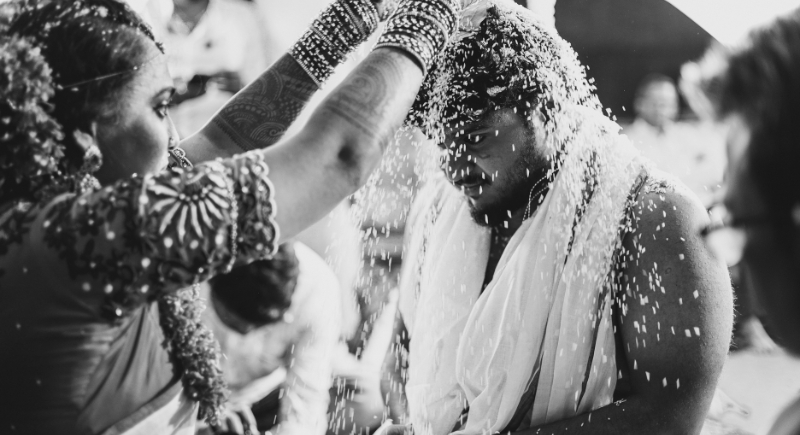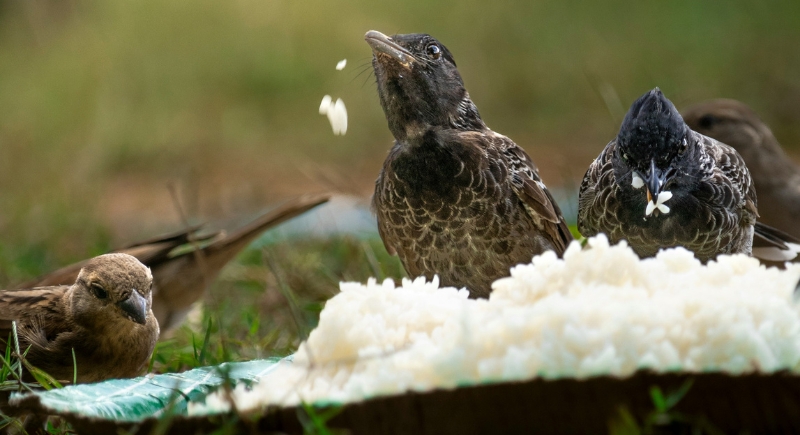The Real Reason Rice Is Tossed at Weddings—And Where the Tradition Comes From
A wedding send‑off often looks like a choreographed moment out of a romantic film. At many ceremonies in past decades, guests lined up outside churches or gathering halls with handfuls of rice ready to toss as the newly married couple walked out. The grains scattered through the air and created a striking image that often showed up in photos and home videos. This practice is not as common today, and plenty of modern weddings skip it or replace it with alternatives like bubbles, petals, or biodegradable confetti. However, the image of rice raining down on a smiling couple remains one of the most recognizable wedding traditions in popular memory.
Roots in Ancient Customs

Image via Unsplash/BenMoses M
Rice tossing traces back to ancient agrarian communities. Thousands of years ago, farming cultures held strong beliefs about crops and fertility. In Roman celebrations, wheat was thrown to encourage fruitfulness in a marriage. In Celtic regions, guests tossed grain as a gesture of prosperity in hopes that the couple would thrive if they were symbolically showered with the food that sustained life. There were also stories that spirits lurked near ceremonies and needed to be kept at peace. A handful of grain scattered into the air was thought to distract or satisfy those unseen presences.
Centuries passed, and different countries shaped the tradition in their own ways. Italians threw candies to symbolize a sweet union. Poles scattered coins and rice to invite wealth. Moroccan weddings featured dried dates or figs tossed in honor of fruitfulness. Eastern India favored flower petals. The basic idea was that guests participated in sending blessings through objects that held cultural value. What people chose to throw depended on what was plentiful or symbolic in their community. Rice was often an easy choice because it was a staple food with a long shelf life and a strong connection to sustenance.
By the time modern weddings adopted the custom, rice had become the go‑to option. It looked elegant in photos, and it was cheap to buy in bulk. Guests leaving churches often lined up with packets in hand, ready to toss as the couple made their exit.
A Myth That Changed the Tradition

Image via Unsplash/Amit Pritam
In the late twentieth century, the practice began to fade in the United States. A rumor started circulating that uncooked rice could harm birds. The claim was that grains would expand inside a bird’s stomach and cause fatal consequences. The story gained so much traction that a Connecticut legislator proposed a bill in 1985 to ban throwing uncooked rice at weddings. Although the bill did not pass, venues and wedding planners reacted quickly. They began discouraging the use of rice, worried about public image and safety concerns.
Scientific voices stepped in to clarify. Bird experts explained that many wild birds regularly eat dry rice without harm. White rice expands by about 33 percent, but birdseed expands by about 40 percent. If birds thrive on seed mixtures every day, then rice is no more dangerous. The USA Rice Federation issued statements to correct the misconception. Despite the evidence, the myth stuck around long enough that many couples turned to other options. Venues liked those alternatives because rice also created practical problems. It scattered across hard surfaces and became slippery. It also attracted rodents in outdoor spaces and added time and cost to cleanups after events.
Fresh Ideas for Wedding Tosses
As traditions shifted, creative send‑offs took hold. Some couples choose dried lavender or herbs, which smell good and leave minimal mess. Others like flower petals in colors that match the event palette. Petal mixes can be made ahead of time in small envelopes for guests to grab as they exit. For those who prefer different items, there are plenty of creative approaches that still feel festive.
Pom poms made of soft yarn can be gathered and reused. Sometimes, friends fold paper airplanes and send them through the air as a playful twist. Some weddings even supply noisemakers or handheld drums to create a lively exit without a single grain of anything on the ground. In some regions, planners hand out biodegradable confetti designed to match a wedding theme, which disappears with the next rain and avoids issues with wildlife.
None of these changes erase the history behind the rice toss. That moment was always meant to send goodwill. It came from communities hoping for abundance, strong family lines, and protection from anything that might disrupt a new household. When grains filled the air, people believed blessings filled the air, too. Those thoughts carry through when petals, bubbles, or streamers take their place. A tradition can change its appearance without losing its purpose.
Couples who still want to include rice can do so by planning carefully. Some venues approve the use of rice if cleanup crews are in place. Small cones of rice can be handed to guests along the aisle or placed on chairs with ribbons or tags. Coordinating with an officiant or planner ensures guests know when to toss.
A Long Story in Every Toss
The next time guests gather at an exit line, ready to shower the couple with petals or confetti, know that they’re participating in a long story that spans continents and eras. Those grains once represented hope in ancient fields. Today, they live on in every cheer that follows a couple stepping forward together.